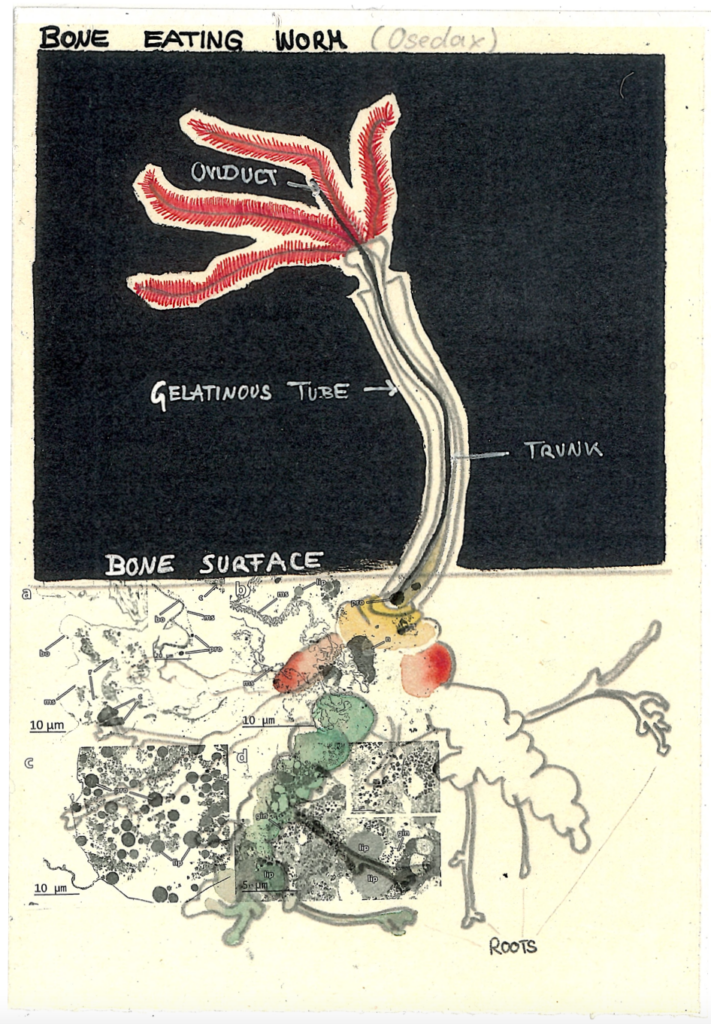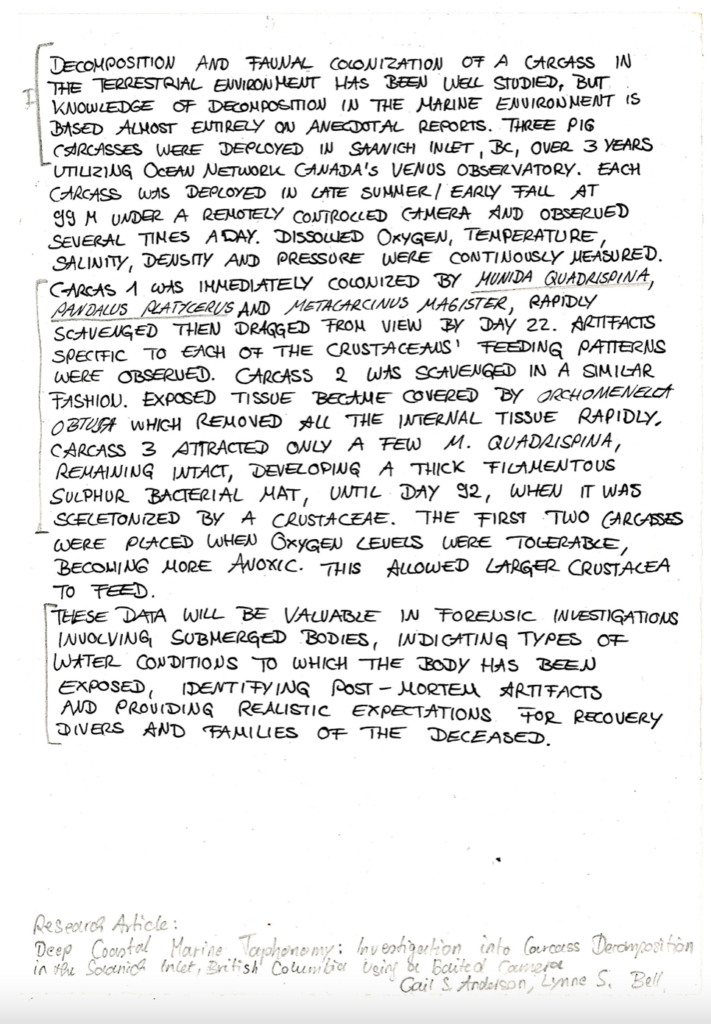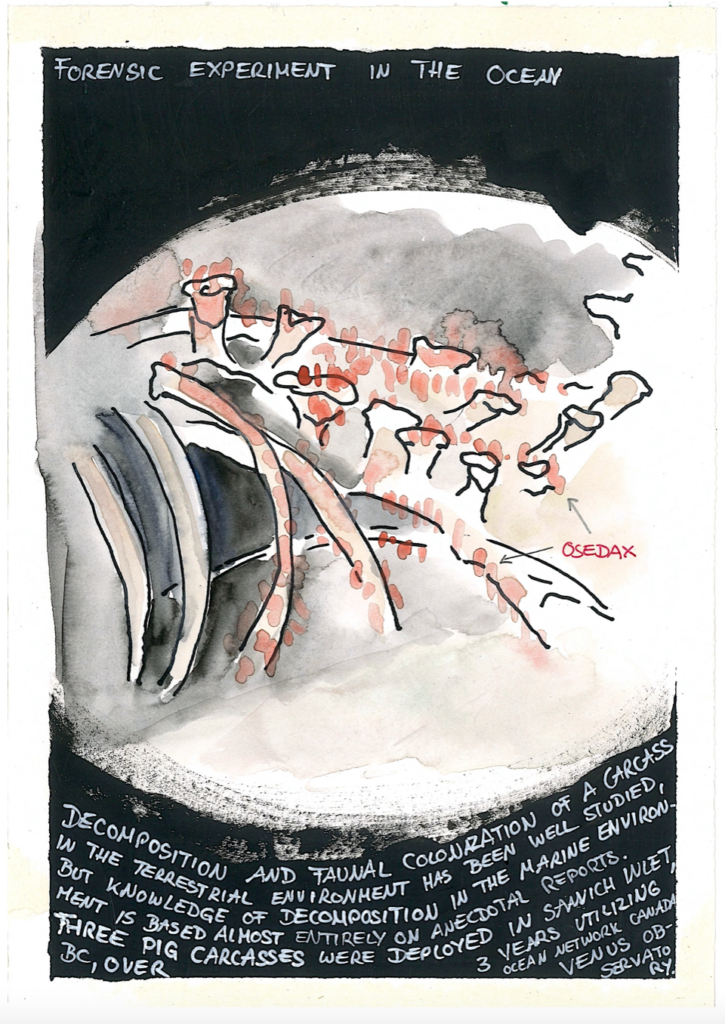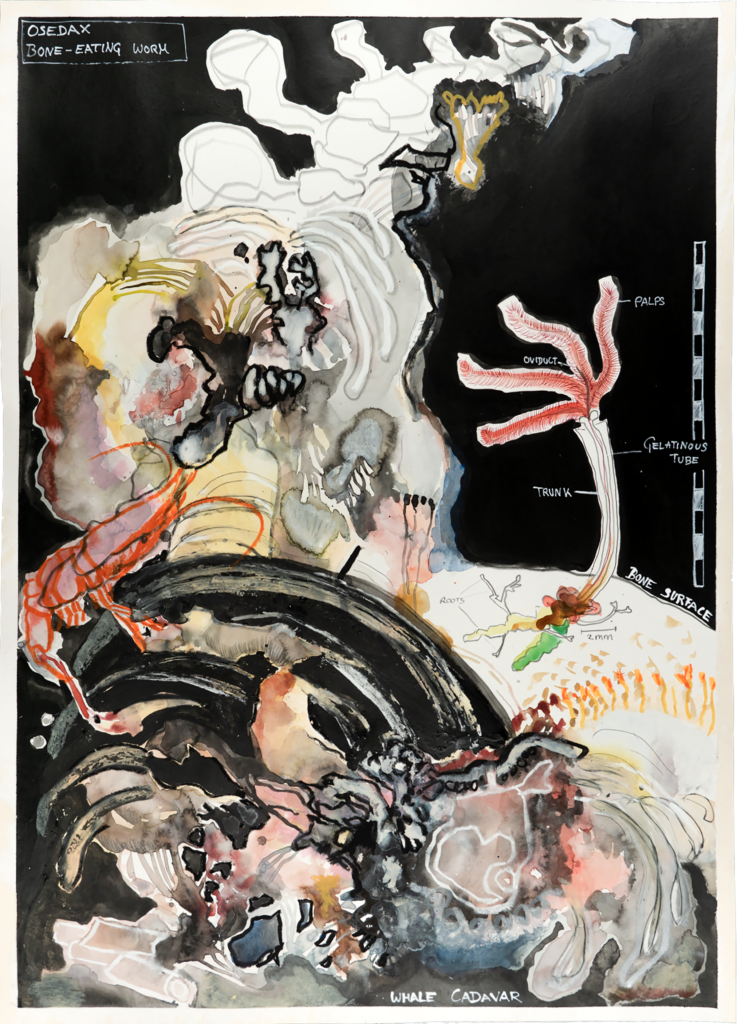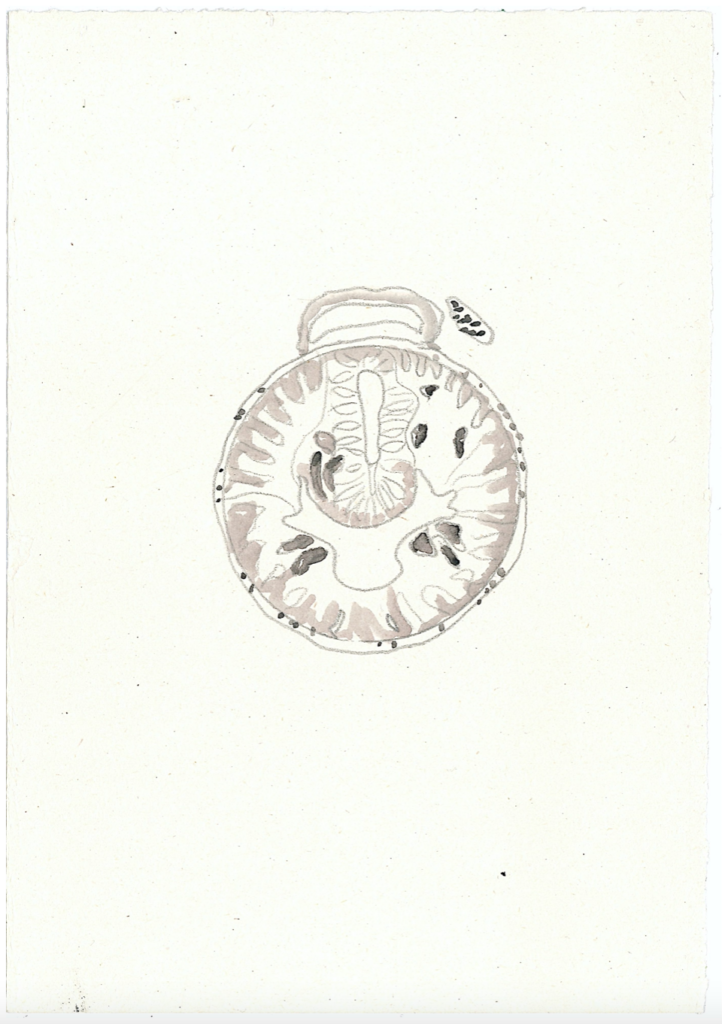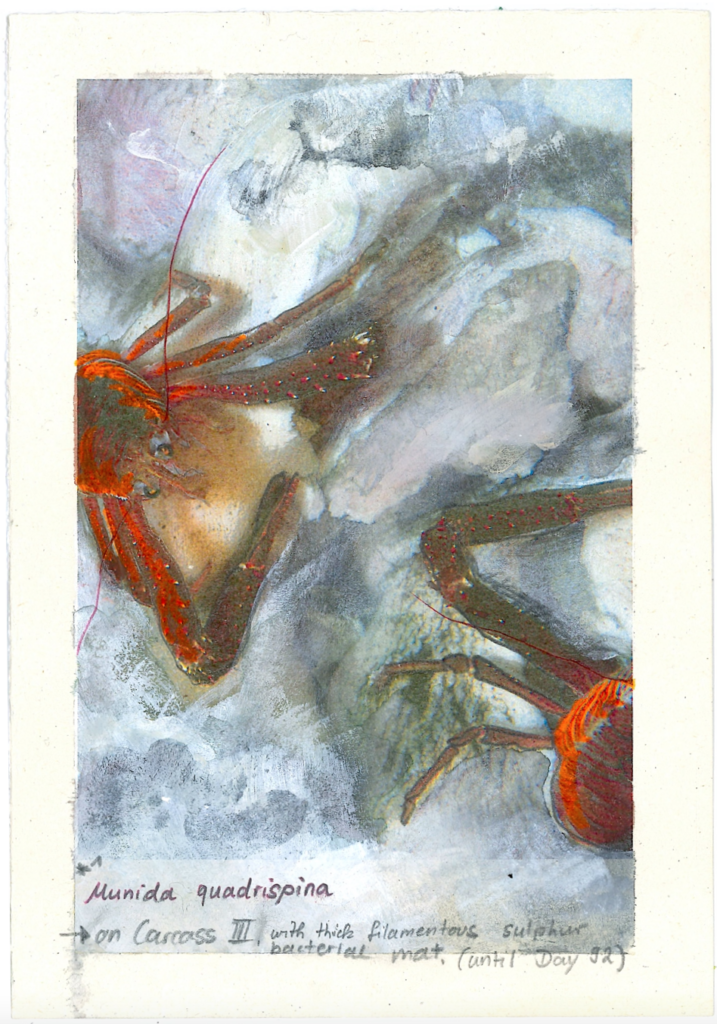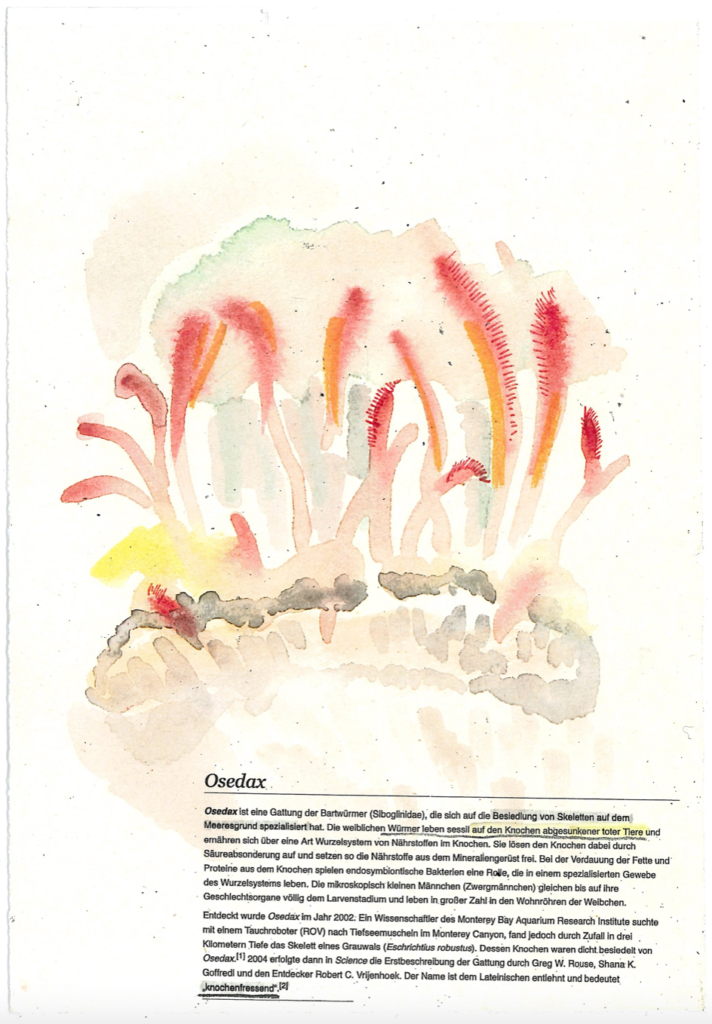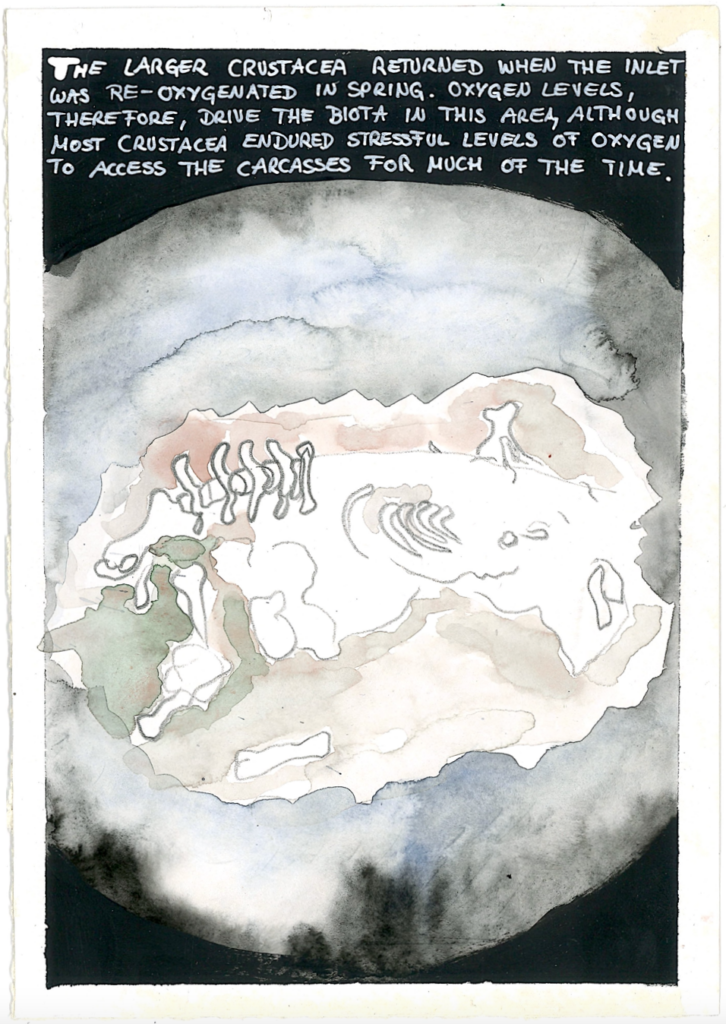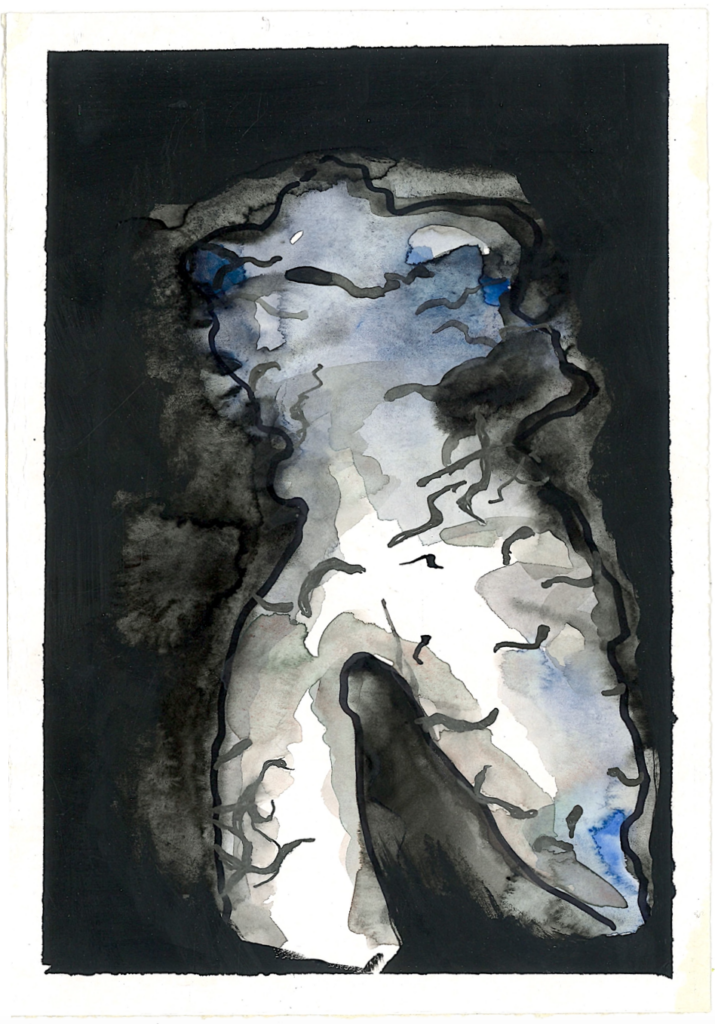Carcass, 2023
Installation
Keramik, Wachs, Zeichnung, Holz, Glas, Metall
ca. 160 x 200 x 30 cm
Aquarell und Zeichnungen auf Papier
70 x 50 cm und 25 x 18 cm
„Decomposition and faunal colonization of a carcass in the terrestrial environment has been well studied, but knowledge of decomposition in the marine environment is based almost entirely on anecdotal reports. Three pig carcasses were deployed in Saanich Inlet, BC, over 3 years utilizing Ocean Network Canada’s VENUS observatory. Each carcass was deployed in late summer/early fall at 99 m under a remotely controlled camera and observed several times a day. Dissolved oxygen, temperature, salinity, density and pressure were continuously measured. Carcass 1 was immediately colonized by Munida quadrispina, Pandalus platyceros and Metacarcinus magister, rapidly scavenged then dragged from view by Day 22. Artifacts specific to each of the crustaceans’ feeding patterns were observed. Carcass 2 was scavenged in a similar fashion. Exposed tissue became covered by Orchomenella obtusa (Family Lysianassidae) which removed all the internal tissues rapidly. Carcass 3 attracted only a few M. quadrispina, remaining intact, developing a thick filamentous sulphur bacterial mat, until Day 92, when it was skeletonized by crustacea.
These data will be valuable in forensic investigations involving submerged bodies, indicating types of water conditions to which the body has been exposed, identifying post-mortem artifacts and providing realistic expectations for recovery divers and families of the deceased.“
(Gail S. Anderson and Lynne S. Bell: Deep Coastal Marine Taphonomy: Investigation into Carcass Decomposition in the Saanich Inlet, British Columbia Using a Baited Camera)
„Osedax worms are extraordinary in several ways. Although these organisms were first described
only ∼10 years ago, whale-bone studies have recovered at least 31 putative Osedax species in the
Pacific, Atlantic, Indian, and Southern Oceans, suggesting a worldwide distribution and large depth
range (21–4,000 m). The worms are characterized by a bizarre palmtree-like morphology, with a crown of reddish palps/gills, a mucus-clad trunk, and bulbous green or yellow root-like structures (large ovisacs) that penetrate cavities in bones (Rouse et al. 2004, Glover et al. 2005b).
Osedax species may also act as important ecosystem engineers by eroding whale bones through
acid secretion, allowing the worms to absorb bone-trapped nutrients (Tresguerres et al. 2013).“
(Craig R. Smith, Adrian G. Glover, Tina Treude, Nicholas D. Higgs, and Diva J. Amon: Whale-Fall Ecosystems: Recent Insights into Ecology,Paleoecology, and Evolution)

